Botox® Training for Medical Professionals
Whether you are looking to kick-start your career in aesthetics or wanting to build your personal development and professional skills, try our award-winning Botox® training for medical professionals. We offer our foundation course to surgeons, doctors, nurses and dentists who have an up to date registration.
As an established training provider for over 16 years, Cosmetic Courses has trained over 6000 professionals in Botox ® and dermal filler techniques, supporting them to set up their own successful clinics.
Benefits of Enrolling on Botox® and Dermal Filler Training
Botox® and dermal fillers demand is increasingly high, showing to be a beneficial area to train in. The majority of UK cosmetic treatments undergone are non-surgical, so you’ll be entering into a thriving industry that’s set to grow even larger. Our highly qualified team provide all the training and support required, offering their expertise and advice to guide you on your journey into aesthetic medicine.
Benefits include:
- Gain the skills and confidence to enter aesthetic medicine
- Become your own boss and work flexible hours
- Have more control over your career and future
- Provide the care you want to give – including spending more time with patients
- Enjoy fewer regulations than when working in the NHS
- Receive your professional certification at course completion
- Unlimited support and aftercare are available for both your clinical needs and business
We’ll help you to become fully equipped to forge the career you want in non-surgical cosmetic treatments and aesthetics, whether as a surgeon, nurse, doctor or dentist.
Why Choose Our Botox® and Dermal Filler Training Course?
Combining both practical skills and business knowledge, our popular Botox® and Dermal Filler Course can help you begin to build a career in aesthetics. Our Botox® Training for Medical Professionals will introduce you to basic dermal filler and Botox® treatments (Juvederm and Allergan Botox®) which are highly sought after in the industry, giving you the foundation knowledge you’ll need.
Training involves:
- A one day course
- Interactive training in small groups
- Led & supervised by an expert trainer
- Practical, hands-on training for dermal filler and Botox injections using live models
- Fully functioning clinic environment
- CPD certificate provided on successful completion
- Held in a number of locations (Belfast, Buckinghamshire, Leeds, Birmingham, Nottingham and London)
- Starter kits and supplies available to purchase or order upon completion
You’ll learn everything from facial anatomy and injection techniques to aftercare and how to market your own practice. The CPD certificate you receive is insurance company recognised (we partner with leading aesthetic insurance companies), allowing you to practice the techniques you’ve learned straight away once you have the right insurance in place.
Continue Your Aesthetics Training
You can choose to build on your aesthetics training later on, including our Foundation Follow on Day, bespoke one-to-one course, introduction to lip augmentation and Level 7 Qualification in Injectables (the foundation course is Part 1 of this).
Thousands of medical professionals have put their trust in us thanks to our renowned expert faculty at Cosmetic Courses. A hand-picked team from all different medical backgrounds chosen by Medical Director and Consultant Plastic Surgeon, Mr Adrian Richards.
Book Your Botox Training Course Now
If you’re looking for the right dermal filler and Botox training for medical professionals, book our course now.
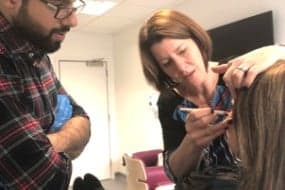
 Aesthetic Dentist at Shine Medical and one of our expert trainers on our lip masterclass Dr Olha Vorodyukhina offers her advice on why lip fillers are essential for any cosmetic practice and how to safely deliver this treatment to your clients.
Aesthetic Dentist at Shine Medical and one of our expert trainers on our lip masterclass Dr Olha Vorodyukhina offers her advice on why lip fillers are essential for any cosmetic practice and how to safely deliver this treatment to your clients.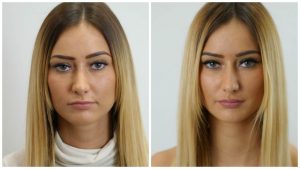

 treating with in their clinic, showing that it is not just woman that are interested in anti-ageing treatments. This could be due to more male celebrities admitting to having treatments, such as Peter Andre and Shane Warne having a little ‘Brotox’ here and there.
treating with in their clinic, showing that it is not just woman that are interested in anti-ageing treatments. This could be due to more male celebrities admitting to having treatments, such as Peter Andre and Shane Warne having a little ‘Brotox’ here and there. This is one of the most important areas for rejuvenation, but there are noticeable differences between the sexes. Anthropologists use the forehead as an indicator to determine the sex of the skull. It has been observed that a female skull has more of a flat supraorbital ridge, with a smooth convexity up to the hairline, whereas the male skull has a more pronounced supraorbital ridge with some concavity before the forehead becomes flatter towards the hairline. This skeletal structure is what influences the soft tissues and the overall position of the eyebrows.
This is one of the most important areas for rejuvenation, but there are noticeable differences between the sexes. Anthropologists use the forehead as an indicator to determine the sex of the skull. It has been observed that a female skull has more of a flat supraorbital ridge, with a smooth convexity up to the hairline, whereas the male skull has a more pronounced supraorbital ridge with some concavity before the forehead becomes flatter towards the hairline. This skeletal structure is what influences the soft tissues and the overall position of the eyebrows. This is an area that is extensively covered in female rejuvenation, but it does come with limited descriptions when it comes to males. Females have a rounder and fuller cheek due to having a thicker fat compartment in the medial area compared to the lateral area. In regards to female ageing, a fuller cheek gives a more youthful look, referring back to the triangle of youth – everything is more pert and smoother. Male cheeks tend to be flatter and more angular due to a thinner layer of subcutaneous fat. The technique used to treat this area have slight differences, and the volume of product used needs to vary. To keep the ‘flatter’ cheek look for male patients, product should only be used to replace the volume loss. Females can have slightly more product used, and this can be replaced more often to maintain the fuller cheek look.
This is an area that is extensively covered in female rejuvenation, but it does come with limited descriptions when it comes to males. Females have a rounder and fuller cheek due to having a thicker fat compartment in the medial area compared to the lateral area. In regards to female ageing, a fuller cheek gives a more youthful look, referring back to the triangle of youth – everything is more pert and smoother. Male cheeks tend to be flatter and more angular due to a thinner layer of subcutaneous fat. The technique used to treat this area have slight differences, and the volume of product used needs to vary. To keep the ‘flatter’ cheek look for male patients, product should only be used to replace the volume loss. Females can have slightly more product used, and this can be replaced more often to maintain the fuller cheek look.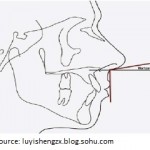 There are more subtle differences between the sexes in this area. There are 2 angles that are used to determine the ideal nose shape: Naso-labial Angle and Naso-frontal angle.
There are more subtle differences between the sexes in this area. There are 2 angles that are used to determine the ideal nose shape: Naso-labial Angle and Naso-frontal angle.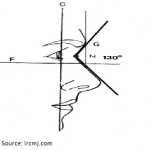 Naso Frontal is the angle at the radix, the lowest point of the nasal bridge formed by a line running from the radix to the glabella and from the radix along the dorsum of the nose. This position of the radix is important between males and females. Females are normally in line with the lash line whereas males are at the level of the tarsal fold.
Naso Frontal is the angle at the radix, the lowest point of the nasal bridge formed by a line running from the radix to the glabella and from the radix along the dorsum of the nose. This position of the radix is important between males and females. Females are normally in line with the lash line whereas males are at the level of the tarsal fold.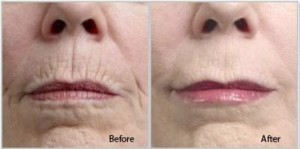 When treating both the female and male face for any aesthetic treatment, it is important to book them in for a full consultation, to undertake a facial analysis. Within this consultation, grade the upper, mid and lower face in terms of structure, proportion and symmetry. Within our training, we advise that you take photos of all your patients and keep these as a record to show before and after treatment– it also helps to show the patient how far they have come on their treatments with you.
When treating both the female and male face for any aesthetic treatment, it is important to book them in for a full consultation, to undertake a facial analysis. Within this consultation, grade the upper, mid and lower face in terms of structure, proportion and symmetry. Within our training, we advise that you take photos of all your patients and keep these as a record to show before and after treatment– it also helps to show the patient how far they have come on their treatments with you.






